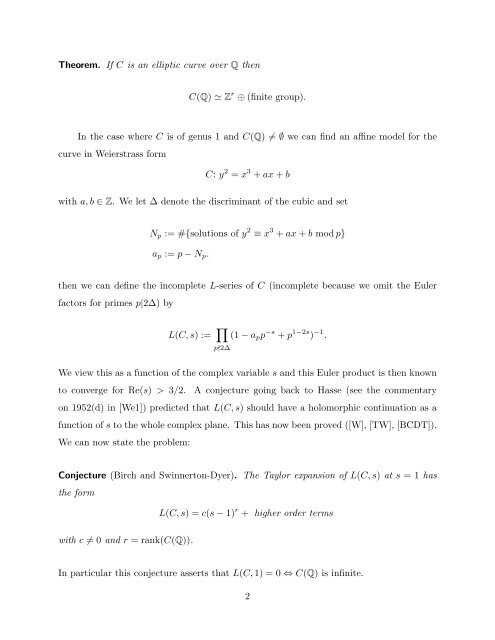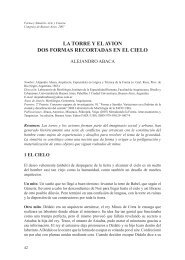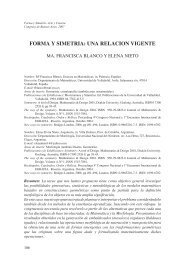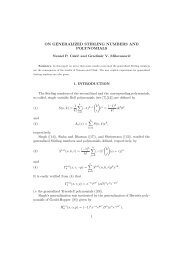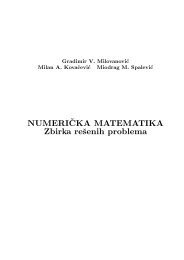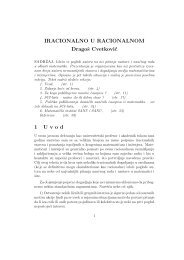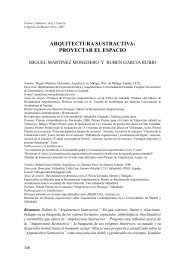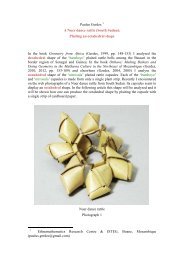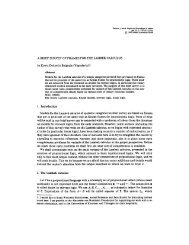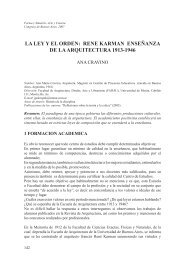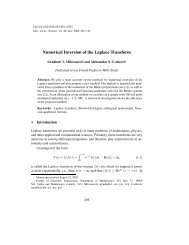The Birch and Swinnerton-Dyer Conjecture
The Birch and Swinnerton-Dyer Conjecture
The Birch and Swinnerton-Dyer Conjecture
You also want an ePaper? Increase the reach of your titles
YUMPU automatically turns print PDFs into web optimized ePapers that Google loves.
<strong>The</strong>orem. If C is an elliptic curve over Q then<br />
C(Q) ≃ Z r ⊕ (finite group).<br />
In the case where C is of genus 1 <strong>and</strong> C(Q) ≠ ∅ we can find an affine model for the<br />
curve in Weierstrass form<br />
C: y 2 = x 3 + ax + b<br />
with a, b ∈ Z. We let ∆ denote the discriminant of the cubic <strong>and</strong> set<br />
N p := #{solutions of y 2 ≡ x 3 + ax + b mod p}<br />
a p := p − N p .<br />
then we can define the incomplete L-series of C (incomplete because we omit the Euler<br />
factors for primes p|2∆) by<br />
L(C, s) := ∏<br />
(1 − a p p −s + p 1−2s ) −1 .<br />
p∤2∆<br />
We view this as a function of the complex variable s <strong>and</strong> this Euler product is then known<br />
to converge for Re(s) > 3/2. A conjecture going back to Hasse (see the commentary<br />
on 1952(d) in [We1]) predicted that L(C, s) should have a holomorphic continuation as a<br />
function of s to the whole complex plane. This has now been proved ([W],[TW],[BCDT]).<br />
We can now state the problem:<br />
<strong>Conjecture</strong> (<strong>Birch</strong> <strong>and</strong> <strong>Swinnerton</strong>-<strong>Dyer</strong>). <strong>The</strong> Taylor expansion of L(C, s) at s =1has<br />
the form<br />
L(C, s) =c(s − 1) r + higher order terms<br />
with c ≠0<strong>and</strong> r =rank(C(Q)).<br />
In particular this conjecture asserts that L(C, 1) = 0 ⇔ C(Q) is infinite.<br />
2


